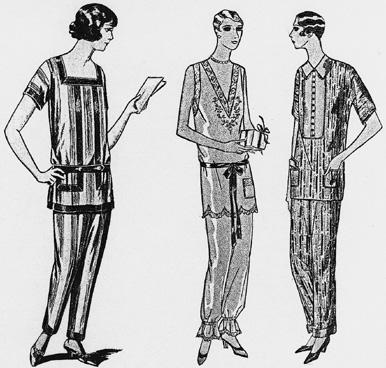If Walls Could Talk: An Intimate History of the Home (13 page)
Read If Walls Could Talk: An Intimate History of the Home Online
Authors: Lucy Worsley
Tags: #History, #Europe

It’s often been suggested that Henry VIII’s various health troubles were caused by syphilis, and he did indeed make potions and salves of his own devising ‘to dry excoriations and comfort the member’. But at no point did he disappear from public life for the standard six-week mercury treatment, as did his French contemporary, Francis I. So the case seems unproven. (Syphilis, known in England as ‘the French disease’, was called ‘the English disease’ in France. The other conditions thought abroad to be peculiarly English were flagellation, suicide and bronchitis.)
Anyone using a prostitute in seventeenth- or eighteenth-century London would have run a high risk of getting venereal disease. ‘A Whore’, asserted one moraliser, making a good point but in a particularly unpleasant way, ‘is but a Close-Stool … that receives all manner of filth, she’s like a Barber’s Chair, no
sooner one’s out, but t’others in.’ No wonder James Boswell, after his visit from ‘Signor Gonorrhoea’, reluctantly decided to try the reusable animal-gut condoms that were increasingly available.
Some of the saddest syphilis cases were the wives and children infected by straying husbands. But most heart-rending of all were the victims of the strange and horrible Georgian idea that a man could get rid of his syphilis by having intercourse with a small child, even a baby. His young partner would remove his disease, it was thought, leaving him clean and cured.
Since the 1950s, it’s been easier to control syphilis, and if detected early, the patient will make a full recovery. But be warned: the numbers of new cases being reported today are on the rise!

11 – What to Wear in Bed
What do I wear in bed? Why, Chanel No. 5, of course.
Marilyn Monroe
As bedrooms were communal places throughout so much of their history, people were used to being seen in their night-clothes. Instructions written for a medieval pageboy describe how he should undress his master and get him ready for bed. (They have the amusing effect of making the master/king/lord in question sound rather like a doll.) When your sovereign lord wants to go to bed, the page is told, you must spread out a foot sheet for him to stand upon, and take off his robe. Then you put a cloak on his back, before pulling off his shoes, socks and hose. (‘Hose’, or leg coverings, consist of ‘upper hose’, or breeches, and ‘nether hose’, or stockings.) You should throw the hose over your shoulder before combing his head and putting his kerchief upon it, then putting on his nightgown.
This kerchief, wrapped around the head, would develop into the nightcap. The thought of sleeping with an unprotected head was abhorrent in an age when sickness was thought to travel through the air in a cloud of evil ‘miasma’. People really believed that they might die from sitting or sleeping in a draught. They were paranoid about keeping their heads warm (but without overheating: some nightcaps had a hole in the crown, so that
‘the vapour may go out’). My own mother wasn’t allowed by my grandmother to leave the house with wet hair even in the 1950s.
Cardinal Wolsey, Henry VIII’s minister, was the son of a humble Ipswich innkeeper and butcher, yet rose through the ranks of the church, one of the few careers open to young men of modest means. He revelled in his rich cardinal’s robes of red, but during his frequent work binges he stayed in his nightclothes all day. His talent at statecraft and his industry under pressure were both enormous: during negotiations with the French in 1527, Wolsey worked for twelve hours continuously from four in the morning, yet ‘never rose once to piss, nor yet to any meat, but continually wrote his letters with his own hands, having all that time his nightcap and kerchief on his head’.
Most people slept in a shirt (men) or shift (women) just like the one they wore as underwear in the daytime; sometimes even the very same one. A family forced from their beds by a fire in their house on the old London Bridge in 1633 took to the street with ‘nothing on their bodies but their shirt and smock’. Those with the money bought special nightshirts with slightly fuller sleeves and a deeper neck opening than those worn during the day.
A surprising number of daytime fashions started out as bedroom wear. Anne Boleyn was bought nightgowns by Henry VIII, notably one of black satin bound with black taffeta and edged with black velvet. Something like a modern dressing gown, ‘nightgowns’ such as Anne’s were warm, loose and often hooded garments. They were worn over other clothes, and taken off at the point of getting into bed.
Being snug and practical, nightgowns made their way out of the bedchamber and into public areas (rather like ‘housecoats’ in the twentieth century). Count Egmont wore a ‘red damask’ nightgown to his own execution in 1568, while in 1617, Lady Anne Clifford even went to church in her ‘rich night gown’. In
time, the nightgown evolved into the smartest and most formal dress ever invented: the eighteenth-century court mantua, a dress with an enormously wide hooped skirt. The mantua began as bedroom wear, but developed into a stylised and strangely fossilised uniform for formal occasions. In the slow-moving world of the court it was still worn in the 1760s, but looked like an extreme parody of the off-duty outfits of nearly a century earlier.
The nineteenth century saw the development of specialist nightgowns, and voluminous white cotton was the textile of choice in the age when Britain’s mills dominated the world. No woman would have worn pyjamas until after the First World War. In the 1920s, the influence of Hollywood films brought about a revolution in bedroom wear. When the stars appeared in scenes set in bedrooms, they were put into satin so that they’d shimmer in the studio lighting. Around the same time, Madame Vionnet’s invention of the ‘bias’ cut allowed clothes to cling more closely to the body, so a generation of shiny, slinky, peachy or flesh-coloured nightgowns appeared. They could also be made out of the new synthetic rayon for those who couldn’t afford silk. However glamorous your very own Hollywood-inspired, peach-coloured 1930s boudoir might have been, though, in Britain it probably still lacked central heating, and those bias-cut silk nightgowns would have disappeared under thick, quilted, satin dressing gowns.
Pyjamas also became standard wear for female Hollywood stars, inspired by decadent, exotic, Chinese garments rather than the striped cotton pyjamas of conventional male night-wear. Shanghai and Hong Kong were glamorous travel destinations, reached by cruise ships on which pyjamas were considered appropriate leisure wear for the fashionable.
Since the 1920s, pyjamas and nightdresses have evolved in line with contemporary cut and choice of fabric, but there has been no real revolution in nightwear for the last few decades.
Perhaps the surprising thing is that, with central heating and duvets, anyone needs pyjamas at all. Certainly the dressing gown has an archaic air, and belongs more to the communal world of the hotel or house share than to most people’s private bedrooms.

The first generation of pyjamas for ladies, from a 1920s ladies’ magazine

12 – Sleeping with the King
The crowd is ushered through the King’s chambers to view a … magnificent bedchamber hung with fine canopies.
César de Saussure, visitor to London, 1725
We’ve heard about royal dressing ceremonies, and there was a similar kerfuffle in the evening when the king or queen wanted to go to bed.
The origins of the royal putting-to-bed ceremony can be seen in the preparations performed for a medieval knight or squire. These were identical wherever he happened to lay his head as he travelled from castle to castle upon a journey or progress:
See his sheets be clean, then fold down his bed, and warm his night kerchief and see his house of office be clean, help off his clothes, and draw the curtains, make sure the fire and candles, avoid [chuck out] the dogs, and shut the doors.
The middle-class fifteen-year-old French housewife to whom the advice book
Le Ménagier de Paris
is addressed must similarly serve her husband’s needs at night, with extras thrown in too. Her duties include:
Removing his shoes in front of a good fire, washing his feet, offering clean shoes and socks, serving plenteous food and drink, respectfully honouring him. After this, she puts him to sleep in white sheets and his nightcap, covered with good furs, and satisfies him with other joys
and amusements, intimacies, loves and secrets about which I remain silent.

A royal levee. The king is ceremonially dressed before his courtiers
Royal ceremonies were along exactly the same lines, but multiplied vastly in terms of complication and the number of people involved.
Henry I’s household accounts mention many of the numerous people who prepared the king’s bedchamber, including the ‘porter of the king’s bed’, who received an extra three halfpence for his ‘man and a packhorse’ (remember the bed was still being carried about from castle to castle). The king’s ‘ewerer’ got a penny for drying the king’s clothes, and ‘when the king has a bath 3 pence’. (But the accountant didn’t know everybody’s wages: ‘Touching the laundress there is a doubt.’) All these people who worked in the bedchamber together made up the innermost department of the royal household.
The household rules for Henry VIII describe exactly how his bedchamber staff went about making his bed. He slept upon eight mattresses, and his servants had to roll upon them to make sure that enemies had hidden no dangerous daggers inside. When the bed was made with fresh sheets, his servants had to
make the sign of the cross over the bed, kiss the places where they’d touched it, and sprinkle it with holy water.
For the very highest in status, bedroom politics were not merely sexual. Until the late seventeenth century, the royal bedchamber was used for receiving guests and audiences and for ceremony. This proved so onerous that monarchs would sneak out of their state bedchambers into more private, secondary bedrooms when they actually wanted to sleep. William III’s private bedroom, tucked away downstairs beneath the state apartments at Hampton Court Palace, has its locks on the
inside
of each of its three doors. Finally the king could be alone there.
